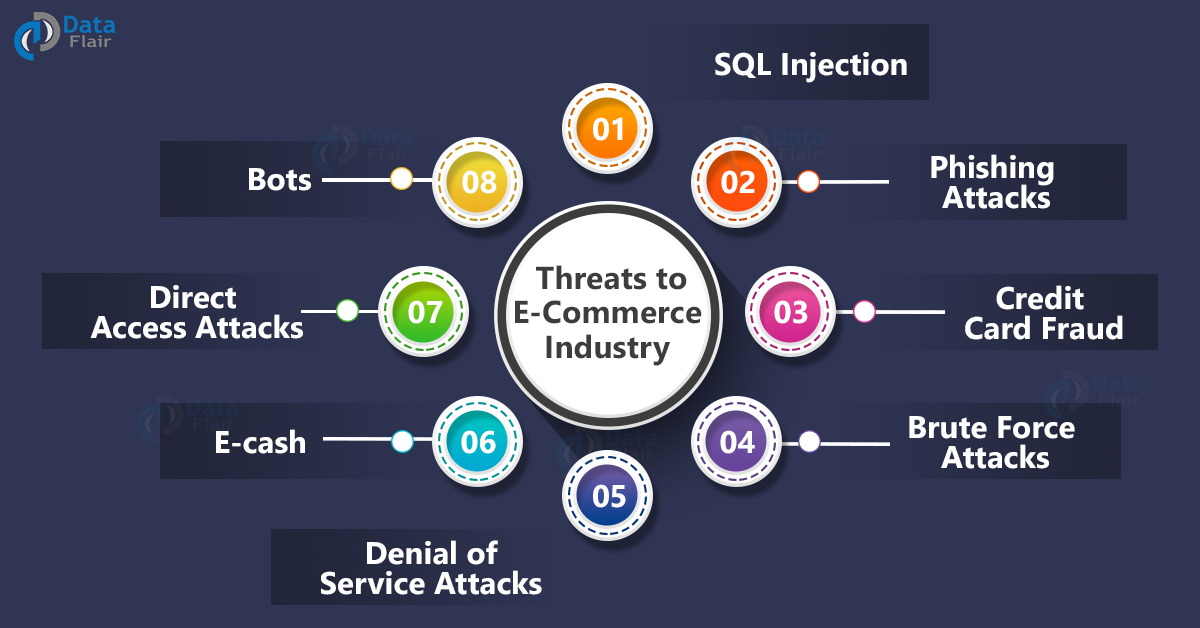Cybersecurity Risk Consultation for E-commerce Sites: Safeguarding Online Businesses
Embark on a journey through the realm of Cybersecurity Risk Consultation for E-commerce Sites, where the digital landscape is fraught with challenges and opportunities. Explore the nuances of securing online retail environments and delve into strategies to combat cyber threats effectively.
Delve into the intricacies of cybersecurity risks, assessment strategies, security measures, and incident response planning tailored specifically for the dynamic world of e-commerce.
Understanding Cybersecurity Risks in E-commerce Sites

When it comes to e-commerce sites, cybersecurity risks are a major concern that can have significant consequences if not properly addressed. From data breaches to fraudulent activities, online retail environments are vulnerable to various threats that can compromise sensitive information and damage the reputation of businesses.
It is crucial for e-commerce businesses to understand these risks and take proactive measures to mitigate them effectively.
Common Cybersecurity Risks for E-commerce Sites
- Payment Card Fraud: Cybercriminals target e-commerce sites to steal payment card information and make unauthorized transactions.
- Phishing Attacks: Scammers use deceptive emails or websites to trick users into providing personal or financial information.
- Malware Infections: Malicious software can infect e-commerce sites and compromise customer data or disrupt operations.
Potential Vulnerabilities Specific to Online Retail Environments
- Weak Authentication: Inadequate password policies or lack of multi-factor authentication can make it easier for attackers to gain unauthorized access.
- Unsecured Networks: Public Wi-Fi networks or insecure connections can expose e-commerce transactions to interception by cybercriminals.
- Outdated Software: Failure to update software and security patches can leave e-commerce sites vulnerable to known exploits.
The Importance of Addressing Cybersecurity Risks in E-commerce
- Protecting Customer Trust: By safeguarding customer data and ensuring secure transactions, e-commerce businesses can build trust and loyalty among their customers.
- Compliance Requirements: E-commerce sites must comply with data protection regulations to avoid legal consequences and financial penalties.
- Business Continuity: Preventing cyber-attacks and data breaches can help maintain seamless operations and protect the reputation of e-commerce businesses.
Strategies for Assessing Cybersecurity Risks
When it comes to safeguarding e-commerce sites against cyber threats, conducting a comprehensive cybersecurity risk assessment is crucial. This involves identifying potential vulnerabilities and assessing the overall security posture of the website.
Penetration Testing
Penetration testing plays a key role in identifying vulnerabilities within an e-commerce site. This simulated cyber attack helps uncover weaknesses that malicious actors could exploit, allowing businesses to address these issues proactively.
- Penetration testing involves ethical hackers attempting to exploit security vulnerabilities to identify weaknesses.
- By simulating real-world cyber attacks, businesses can assess the effectiveness of their security measures and make necessary improvements.
- Regular penetration testing helps ensure that e-commerce sites remain secure against evolving cyber threats.
Security Audits
Security audits are another essential component of assessing cybersecurity risks in e-commerce sites. These audits involve a thorough examination of the website's security controls, policies, and procedures to identify gaps and areas for improvement.
- Security audits help ensure that e-commerce sites comply with industry regulations and best practices.
- By conducting regular security audits, businesses can proactively identify and address security vulnerabilities before they are exploited by cybercriminals.
- Security audits provide valuable insights into the overall security posture of e-commerce sites and help mitigate potential risks.
Implementing Security Measures for E-commerce Sites

Implementing robust security measures is crucial for safeguarding e-commerce sites against cyber threats and ensuring the protection of sensitive customer data.
Examples of Effective Security Measures for E-commerce Platforms
- Regular security audits and vulnerability assessments to identify and address weaknesses in the system.
- Implementing secure socket layer (SSL) certificates to encrypt data transmitted between the user's browser and the server.
- Utilizing a web application firewall to monitor and filter incoming traffic to block malicious attacks.
- Implementing strong password policies and ensuring regular password updates to prevent unauthorized access.
- Utilizing content security policies to prevent cross-site scripting (XSS) attacks and other common web application vulnerabilities.
The Importance of Encryption in Securing Online Transactions
Encryption plays a vital role in securing online transactions by encoding sensitive information, such as credit card details, to prevent unauthorized access during transmission.
Encryption ensures that data is scrambled into an unreadable format, making it virtually impossible for cybercriminals to intercept and misuse.
The Role of Multi-Factor Authentication in Enhancing E-commerce Security
- Multi-factor authentication adds an extra layer of security by requiring users to provide two or more verification factors, such as a password, OTP, or fingerprint, to access their accounts.
- This helps mitigate the risk of unauthorized access, even if one factor is compromised, enhancing overall security for e-commerce platforms.
- By implementing multi-factor authentication, e-commerce sites can significantly reduce the chances of fraudulent activities and data breaches.
Incident Response Planning for E-commerce Cybersecurity
Incident response planning is crucial for e-commerce sites to effectively handle cybersecurity threats and breaches. A robust plan ensures that the organization can respond promptly and efficiently to minimize the impact of incidents.Regular security updates and patches are essential components of maintaining a strong incident response plan for e-commerce cybersecurity.
These updates help protect the site from known vulnerabilities and ensure that the security measures are up to date to defend against evolving threats.
Components of a Robust Incident Response Plan
- Establish clear incident response procedures and protocols.
- Designate a response team with defined roles and responsibilities.
- Implement monitoring tools to detect and alert on potential security incidents.
- Conduct regular drills and exercises to test the effectiveness of the plan.
Importance of Employee Training
Employee training plays a vital role in incident response planning for e-commerce cybersecurity. Properly trained employees can recognize and report security incidents promptly, minimizing the impact on the site and its users.
Significance of Regular Security Updates and Patches
Regular security updates and patches are essential to maintaining the resilience of an e-commerce site's security measures. By keeping systems updated, vulnerabilities can be patched promptly, reducing the risk of successful cyber attacks.
Concluding Remarks

As the discussion on Cybersecurity Risk Consultation for E-commerce Sites draws to a close, it becomes evident that safeguarding online businesses is not just a necessity but a strategic imperative in today's digital economy. Stay vigilant, stay secure.
User Queries
What are the most common cybersecurity risks for e-commerce sites?
Common cybersecurity risks for e-commerce sites include data breaches, phishing attacks, ransomware, and DDoS attacks.
Why is penetration testing important for identifying vulnerabilities?
Penetration testing helps simulate real-world cyberattacks to uncover weaknesses in a system's defenses and address them proactively.
How does encryption enhance the security of online transactions?
Encryption scrambles sensitive data during transmission, making it unreadable to unauthorized parties and ensuring secure online transactions.
What is the significance of employee training in responding to cybersecurity incidents?
Employee training is crucial as it ensures that staff are equipped to recognize and respond to cybersecurity threats effectively, minimizing potential risks.




